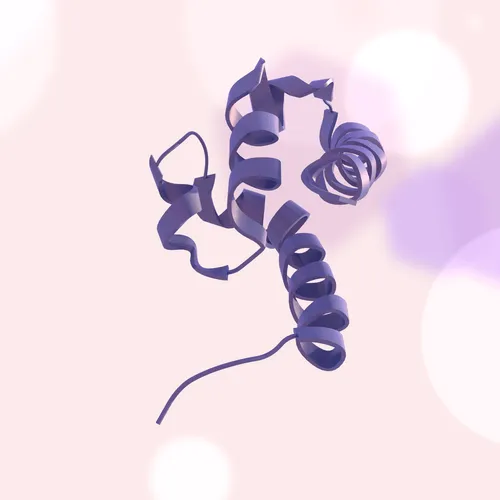Bloom Syndrome


What is Bloom Syndrome?
Bloom syndrome, also known as Bloom’s syndrome, is an inherited condition most easily noticed by the person’s extremely small stature. People with Bloom syndrome have chromosomes which often break and re-arrange. This instability results in high rates of cancer early in life. Some people with the disease develop cancerous tumors before the age of 10, but more commonly cancer appears beginning in the late teens or early to mid-20s.
People with Bloom syndrome have a high-pitched voice and distinct facial features including a long, narrow face, small lower jaw, prominent nose and ears, and red lesions on the cheeks and the bridge of the nose (often described as “butterfly-shaped”) which appear and worsen with sun exposure.
Many, though not all, people with Bloom syndrome have intellectual and developmental disabilities. They may also have diabetes, chronic lung problems, and suppressed immune systems that leave them unable to ward off infection as easily as most people. They tend to have high rates of pneumonia and ear infections.
Men with Bloom syndrome are usually infertile. Some women with the disease have given birth to healthy children. Women often experience early menopause.
Carriers of Bloom syndrome do not show symptoms of the disease, but studies have shown that they are at a greater than average risk of developing cancer, particularly colon cancer. Due to this increased risk, colonoscopy screening is recommended for carriers every 5 years, starting at age 40 (or earlier depending on family history).
How Common is Bloom Syndrome?
Bloom syndrome is very rare, although its frequency is unknown. Approximately one-third of people with the disease are of Ashkenazi Jewish descent, making it more common in this population than in others. Roughly 1 in 48,000 Ashkenazi Jews is affected by the disease.
How is Bloom Syndrome Treated?
There is no cure for Bloom syndrome. Children with Bloom syndrome need nutritional monitoring to ensure maximum growth. Experiments with growth hormones in Bloom patients have been largely unsuccessful. People with the disease are advised to stay out of the sun and wear sunscreen, particularly during childhood, to prevent skin lesions. They should also make an effort to avoid infection of all kinds. In school, they may require special education classes due to learning difficulties.
People with Bloom syndrome are prone to cancer, so they should be screened regularly starting in childhood and with increasing vigilance into adulthood. Because they are particularly sensitive to radiation and DNA-damaging chemicals, standard cancer treatments often need to be modified. If diabetes is present, this condition is typically treated with diet, blood sugar monitoring, and insulin supplements.
What is the prognosis for a person with Bloom Syndrome?
Despite dealing with numerous medical problems, people with Bloom syndrome can lead productive lives. They are of normal or near-normal intelligence. While men with Bloom syndrome are infertile, some women have given birth to healthy children. Typically people with Bloom syndrome lead shortened lives, although lifespan can vary greatly from person to person. The cause of death is usually cancer, which can occur in childhood, but more commonly appears in the late teens or early to mid 20s. Early detection of cancer and appropriate treatment can help extend the lifespan of these individuals.
Resources
- Bloom Syndrome Association
The Bloom Syndrome Association is an international family support and patient advocacy organization for persons affected by Bloom syndrome. The Association comprises persons known to have a diagnosis of Bloom syndrome, their families and friends, medical and scientific researchers, healthcare professionals, educators, and other supporters.P.O. Box 727
Hanover, NH 03755-0727
Phone: (603) 643-2850
- Blooms Connect
A website started by a woman with Bloom syndrome to bring together people who have the disease and their loved ones. Information on the site describes the disease from the perspective of a person who has it.info@bloomsconnect.org
- Genetics Home Reference
Explanations of an extensive number of genetic diseases written for everyday people by the U.S. government’s National Institutes of Health.
- Jewish Genetic Disease Consortium
A combined effort from a number of smaller non-profit organizations to heighten awareness of and reduce the incidence of genetic diseases such as Bloom syndrome, which are prevalent in the Jewish community.315 West 39th Street, Suite 701
New York, NY 10018
Phone: (866) 370-GENE (4363)
info@JewishGeneticDiseases.org
Other Names for Bloom Syndrome
- Bloom-Torre-Machacek Syndrome
- BS
- Bloom’s Syndrome
- BLM
- BLS
Take action now to assess your risk for Bloom Syndrome and your risk for passing it to your children. To get started with a JScreen genetic test, click here.
Source: Myriad.
